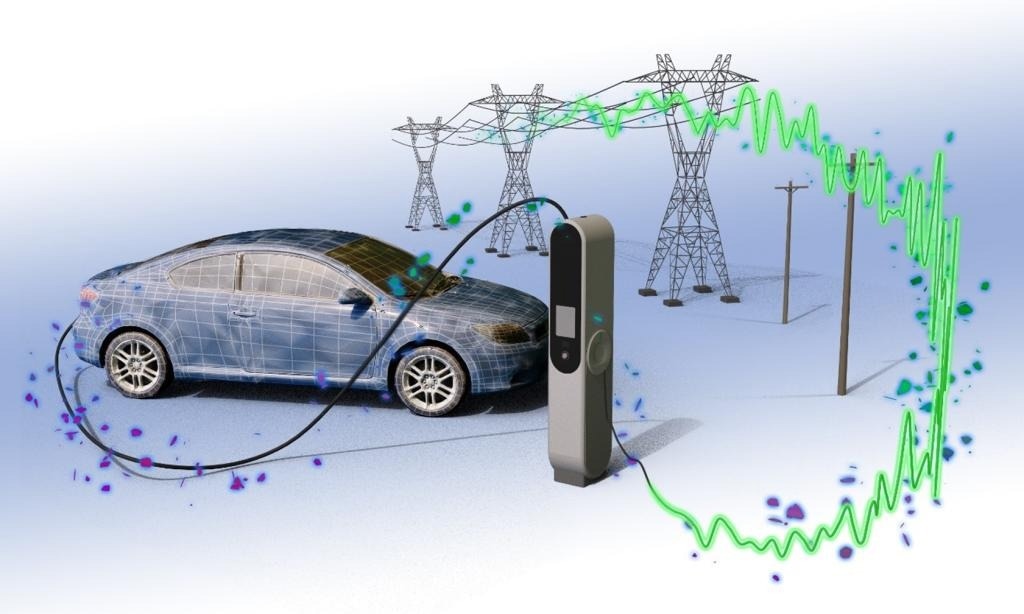American drivers have grown accustomed to the convenience of swiftly refueling at gas stations with ample fuel availability, and electric vehicle (EV) drivers aspire to replicate this experience during their pit stops.
 ORNL researchers are developing algorithms and multilayered communication and control systems that make electric vehicle chargers operate more reliably, even if there is a voltage drop or disturbance in the electric grid. Image Credit: Andy Sproles/ORNL, US Dept. of Energy.
ORNL researchers are developing algorithms and multilayered communication and control systems that make electric vehicle chargers operate more reliably, even if there is a voltage drop or disturbance in the electric grid. Image Credit: Andy Sproles/ORNL, US Dept. of Energy.
However, driver apprehension regarding access to charging stations during extended journeys persists as a hurdle to wider EV adoption despite the United States' efforts to combat climate change by transitioning more drivers to EVs.
Researchers at the Department of Energy's Oak Ridge National Laboratory are striving to enhance the resilience of EV charging.
The main focus is to make chargers available for EVs even if there is an electrical disturbance or hardware failure inside or outside the charger. We want drivers to be able to use EV chargers as soon as they arrive at the charging station.
Namwon Kim, Lead Researcher, Oak Ridge National Laboratory
Upon pinpointing the primary challenges, ORNL researchers devised solutions to tackle two leading causes of charger failure: one from voltage fluctuations in the electric grid and the other originating from within the charger itself.
Kim and his team devised new algorithms to regulate the operational parameters of the power electronic converters, which serve as the cornerstone of EV charging hardware. These converters are programmed to deactivate when power flow deviates from the standard range.
Even a minor fault in the electric grid causing a momentary voltage drop can halt EV charging. Likewise, the failure of a single internal component can lead to a complete shutdown. Restarting these chargers requires maintenance, resulting in considerable downtime at unmanned stations.
To address short voltage sags, ORNL researchers adopted a "ride-through" control algorithm, swiftly decreasing charging power and restoring it once voltage returns to normal within seconds. The team developed a real-time, automated test setup to simulate how the converter hardware reacts to voltage fluctuations. These ride-through controls facilitated the rapid restoration of charging power.
There are wider-ranging advantages as well. When a grid fault leads to the disconnection of numerous EV chargers during high-power fast charging, the voltage level within the power grid can suddenly surge. Such a scenario poses a risk of damaging other vulnerable electrical equipment. Hence, the ride-through capability safeguards the charger and the broader electric grid from potential harm.
Occasionally, disruptions can arise within the charger itself. Each EV charger typically comprises three power modules that collaborate to convert and regulate charging power. To address this issue, the ORNL team developed an additional algorithm enabling the converter to identify and adapt to an internal malfunction instead of shutting down.
Now when one module goes out, the converter can try to continue providing as much power as it can by dividing the load among the remaining two. We are trying to keep the charger running at lower power while it awaits repair.
Namwon Kim, Lead Researcher, Oak Ridge National Laboratory
Researchers devised a novel, multilayered strategy for control and communication within larger EV charging systems, resembling gas stations with multiple pumps. In this approach, a systemwide controller is promptly alerted to issues occurring at individual chargers. Subsequently, it can adjust equipment settings to optimize the customer charging experience.
This research aligns with a broader project involving partnerships with Pacific Northwest and Idaho National Laboratories. The project encompasses automatic fleet management for charging vehicles, such as delivery or long-haul trucks, and monitoring potential cyberattacks. The station controller can manage the order and rates of vehicle charging, effectively balancing energy costs with cargo priorities.
Kim highlighted that the subsequent phase will involve modeling the potential integration of battery storage and solar power to enhance an EV charging station's performance.
Other ORNL researchers involved in the ongoing project include Michael Starke, Madhu Chinthavali, Benjamin Dean, and Steven Campbell. The Vehicle Technologies Office supports the research under the Department of Energy's Office of Energy Efficiency and Renewable Energy.
The research leverages ORNL's Grid Research Integration and Development Center (GRID-C) capabilities. GRID-C focuses on developing technological solutions to advance the dynamic and efficient interaction of the electric delivery system with buildings and vehicles.